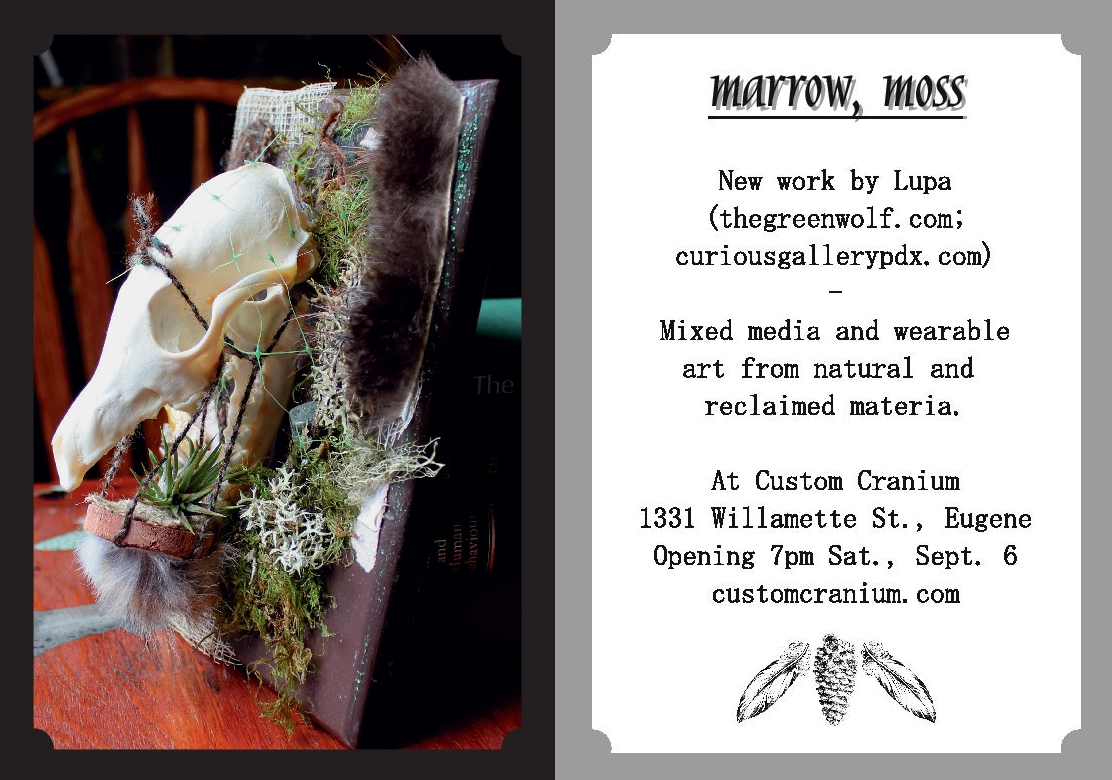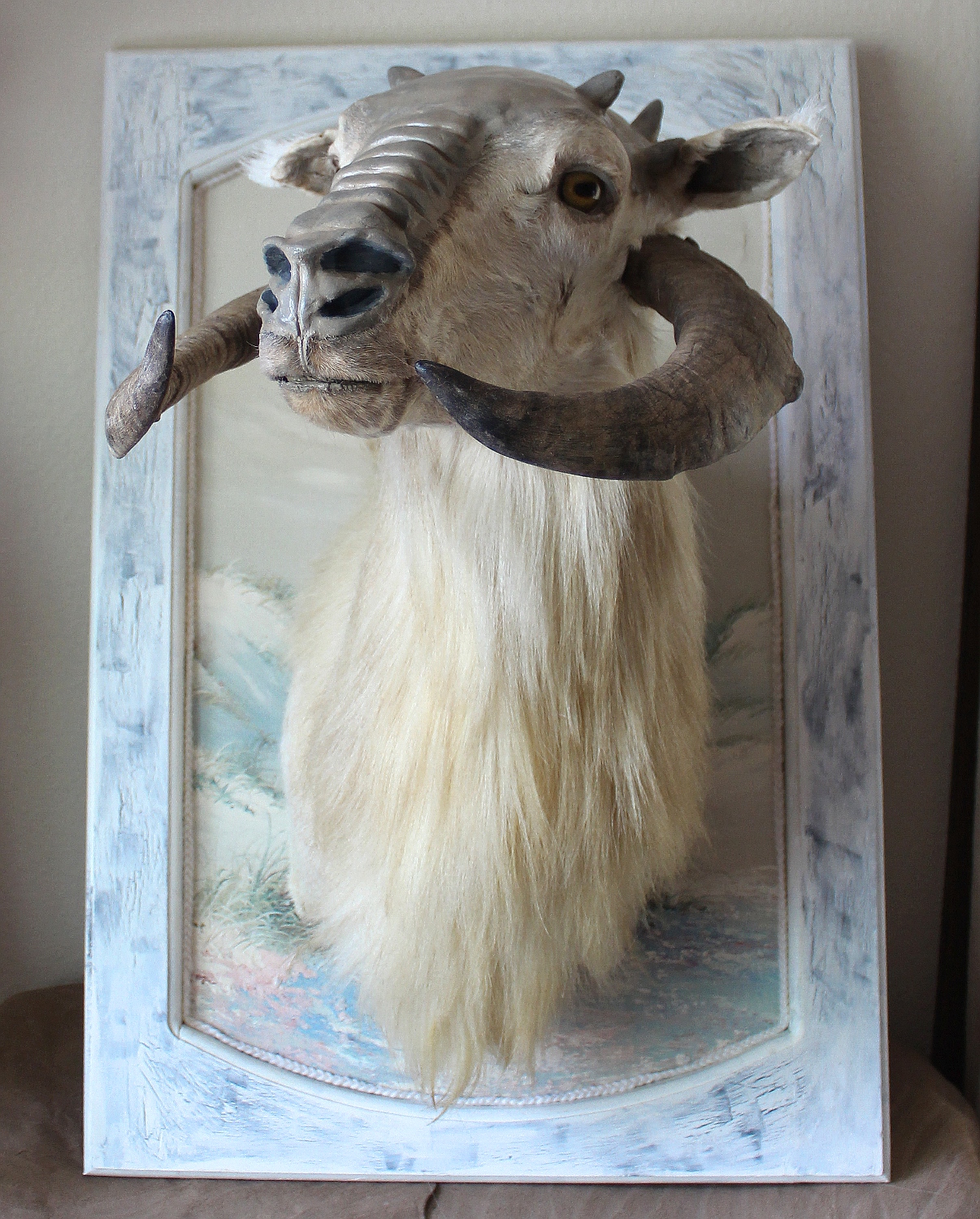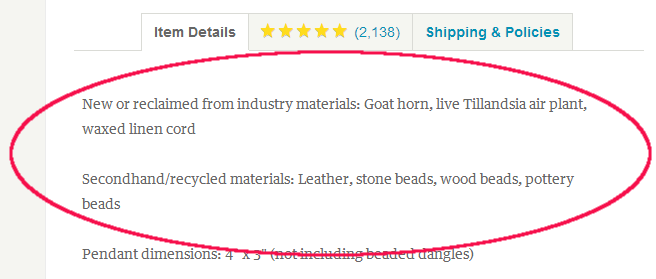Note: This is a piece of fan fiction I wrote for a booklet accompanying my Star Wars-themed altered taxidermy piece, the Teacup Tauntaun. You can see more pictures of this piece and find out more about its construction here.
The Tragic Treatise of the Teacup Tauntaun
By Haali Dendrac
Author’s Note: As a sign of respect to my fellow living beings, I have chosen to capitalize the names of all species of animal described in this book, may Mother Jungle watch over them.
Introduction
On a lonely, frozen planet called Hoth, within the Anoat sector, there is a genus of creatures known as Tauntauns. Several species are native there, to include the Common (or Giant) Tauntaun, the Glacial Tauntaun, and the smaller Climbing Tauntaun. But there is a fourth species—or, rather, there was a fourth species—of which you may have heard: the Teacup Tauntaun. It is infamous for being the only completely domesticated species of Tauntaun, and it is the reason why the name Vordon the Hutt should provoke feelings of repulsion even in the most tolerant of Ithorians.
Vordon the Hutt
Vordon the Hutt was born at an undisclosed location around 245 BBY. Competitive from a young age, he nonetheless lacked the characteristic shrewdness of his kind, instead throwing himself wholesale at any get-rich-quick scheme he could concoct. As a result, he frequently found himself deeply in debt, and soon wore out his financial welcome with his immediate relatives and acquaintances. He showed a particular talent for flattery, however, and was able to talk his way out of more than one potentially detrimental debt collection effort.
Eventually Vordon, in the employ of several members of his clan, was able to pull himself out of debt and amass a small financial surplus. While age and experience helped him to preserve this gain, they had not fully tempered his impulsiveness, particularly when fed by envy for more successful members of his clan. Frustrated at seeing other Hutts of his age beginning to establish themselves as economic forces to be reckoned with, Vordon thirsted for a similar opportunity.
The Teacup Tauntaun
Shortly after the first Galactic War made more sentient beings aware of the existence of Hoth and its wildlife, Tauntauns, particularly the Common Tauntaun, became the object of great curiosity. While Hoth already had visitors in the form of both renegades, explorers, and those with a particularly rugged idea of “leisure activities”, it became fashionable on certain wealthier planets to take ecotours to view the traditional range of the Common Tauntaun, particularly the herd from which came the steed that bore none other than Luke Skywalker.
Vordon had watched his cousin, Filpat, make his fortune on the manufacture and sales of stuffed toy Tauntauns. Not to be outdone, in 23 ABY the ambitious Vordon traveled to Hoth himself to see what opportunities he could find. It was while he was touring a domestic Tauntaun breeding facility that he was struck by inspiration: if people liked cuddling a toy Tauntaun, wouldn’t they enjoy cuddling a real one even more?
Vordon cut his trip short and returned to Nal Hutta. There he procured a high-interest loan on short notice, with which he arranged the purchase of a choice piece of ice cave with a heavy lichen carpet, and two dozen of the smallest Common Tauntauns to be found. These animals, as small as half the size of their normal relatives, came with a warning that they should not be bred, as they were runty and therefore in ill health, but small size is exactly what Vordon wanted.
The Hutt immediately set about breeding his stock, choosing the very smallest animals from each litter and breeding them, even if it meant inbreeding. Because Teacup Tauntauns reached maturity more quickly than their wild ancestors, Vordon was able to breed and crossbreed his stock with alarming speed. Additionally, because of their relative genetic malleability thanks to a few key mutations early in the breeding program, each new litter could display remarkably pronounced changes compared to their parents, for example substantially larger horns or thicker, more extensive fur. Within a few years Vordon was drafting the first official species standards for the Teacup Tauntaun in anticipation of what he hoped would be a glorious unveiling to galaxies far and wide.
Hoth was never considered a particularly glamorous planet, even by those who visited it for cold-weather recreation. But Vordon set out to romanticize Hoth and its inhabitants to a degree that no one else would have bothered attempting. An early advertisement that was drafted but never published described “bright, shining dunes of the purest white snow, flanking crisp frozen seas”, and populated by “vast herds of noble Great Tauntauns traversing the plains under a mist-wrapped sun, while Mynocks flit hither and yon above them”. (Vordon was apparently unaware that Mynocks parasitize Exogorths, not Tauntauns.)
Official Species Standards
These are the newest version of the standards, put forth by Vordon in 61 ABY under the guise of the Intergalactic Teacup Tauntaun Fanciers’ Club, which boasted a membership consisting of himself and Jixi, Vordon’s pet ice scrabbler which he saved from being consumed by his herds in a moment of unusual sentimentality.
General Appearance
At first look, the Teacup Tauntaun is a scaled-down version of its larger Common cousins. However, upon closer inspection it is a much cuddlier beast, with more of its form covered in soft fur. The females are slightly larger than the males, though both give an impression of being sturdy and fleet of foot, with an intelligent air about them.
Temperament
The Teacup Tauntaun is bred to be a companion animal, and so should be quiet but not docile. The young may be playful and rambunctious, but ideally settle into a more stable adult manner. It is intelligent enough to be trained, whether that is to perform tricks for table scraps, or as a casual hunting animal provided the chase is secondary to a place in the home. This species is known for its loyalty to those it considers its herd, so early socialization with the entire family is a must. While the wild Tauntaun may bolt at the merest sight of an approaching Wampa, the Teacup Tauntaun will bravely defend its herd until all are safe, and its natural wariness makes it an ideal home guardian.
Size
The desired height is between twenty-four and thirty inches at the shoulder for a female, slightly smaller for a male. Longer than it is tall, the teacup Tauntaun should ideally have a 1:1 ratio of body length (not including tail) to height (from shoulder to ground), with the tail being as long as the body to provide the proper balance.
Head
The head is more slender than that of the wild Tauntaun, though not delicate. The long, curving horns are retained, and should be of equal length. The lower half of the face is covered in fur, to include around the mouth and eyes; the Teacup lacks the large, unattractive scaly bags around its eyes, and any appearance of these should be considered a serious fault. The upper portion of the face is covered in scaly skin of a beige, brown or gray color, and the nose has prominent ridges leading to the two pairs of nostrils. The ears are also covered in short fur, with longer tufts at the ends. The Teacup Tauntaun has five to ten smaller horn buds upon the top of the skull; these should be arranged symmetrically.
Body
The body should give an impression of strength and speed, but not too much thickness. It is a bottom-heavy animal, with powerfully muscled legs and broad feet. The legs are carried well underneath it, providing a balancing point between the head and the tail. The forelimbs are smaller than the hind, but stable enough to support the animal on all fours for grazing. There should be five toes on each foot, fore and hind, to include the dewclaw. The tail is long and finely scaled, slender but not skinny, and solidly attached to the body with a smooth transition along the spine.
Coat and Color
White is the only acceptable color for the Teacup Tauntaun, though a small amount of beige, brown and gray shading is allowed around the eyes, mouth, and wherever fur and scales meet. The body fur should be long and flowing, while the hair on the face is shorter. More fur is preferential to less, with the exception of the top of the head and the nose ridges.
Movement
The animal should move more gracefully and lightly on its feet than its wild cousins. The gait should be smooth, to include when running, and only the hind legs should be employed when moving any faster than a slow graze.
Unacceptable Flaws
Missing dewclaws
Cropped ears or tail
One set of nostrils
Lack of fur around eyes or mouth
Lack of tufts on ears
Broken, missing, misshapen horns, or horns of different lengths
Broken, missing or asymmetrical horn buds
Coat color other than white
Curly coat
No fur
**********************
So what happened to this beastie? What parallels does its fate have with an animal native to our won reality? And just who is the author, Haali Dendrac? Tune in tomorrow to find out!
Also, if you’d like to see the Teacup Tauntaun itself in person, it will be on display at Good: A Gallery here in Portland, OR for the month of May. The group show officially opens this Friday, May 2, from 7pm – 10pm; here’s more information.
Like this:
Like Loading...






